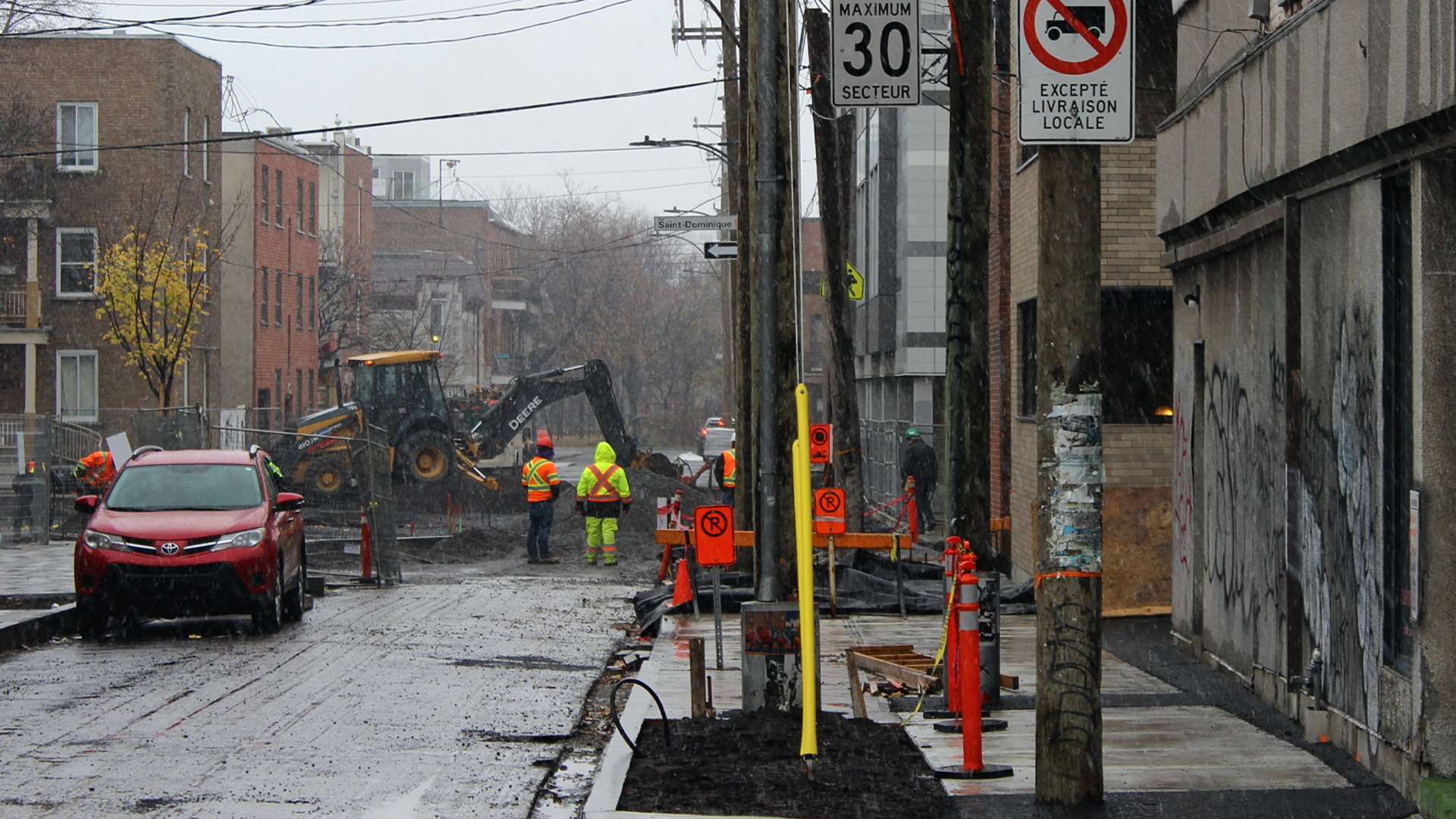
As we start a new year, Canada finds itself on the precipice of generation-defining decisions about how we build, maintain and support the systems that enable our daily lives and socio-economic futures.
Those systems, broadly termed infrastructure, are the physical, social and environmental connective tissue that bind Canada together and represent the culmination of all decisions – and also indecisions – about our priorities and plans for the future.
Given its importance, infrastructure planning, investment and maintenance should be a direct, transparent and evidence-based process. The key word being “should” because the way we approach infrastructure seems to have become untethered from good governance and good policy.
It is far past time that we return to the foundational principles of public policy and administration, solving problems through the use of rigorous, evidence-based planning and evaluation.
Municipal asset management plans
One such strategy is to use existing processes such as municipal asset management plans to support stable, needs-based and priorities-based investments. Municipalities are often required to have an asset management plan to be eligible for infrastructure funding, but Canada doesn’t aggregate and use those plans systematically to determine priority areas and needs.
The federal and provincial governments should meaningfully collect, analyze, evaluate and contextualize these municipal plans as a holistic tool in their policymaking processes.
At present, few if any infrastructure spending programs or policy decisions are ever meaningfully evaluated.
For example, researcher Michael McNally has found that the vast majority of spending on broadband infrastructure has not been reviewed to determine its effectiveness. This is further exacerbated by a myopic focus on market solutions to public-policy problems.
The same is true for managing social-benefit infrastructure. Recent reports by the auditor general indicate that some federal departments have, at best, an incomplete picture of how many eligible people are not accessing benefits to which they are entitled. At worst, they do not know if their programs are supporting hard-to-reach populations, such as people living in rural and remote areas.
Despite these gaps in knowledge about whether policies are achieving their goals, it seems like every week brings a new announcement from various orders of government about how many dollars they will spend on a given issue. However, that spending is rarely contextualized in terms of actual needs and it is often difficult to determine whether that funding is new money, repackaged previous funding or attached to any evaluation metric about how the figure was determined. Nor does it translate into ”shovels in the ground” or indicators about when anyone will know if a given policy or program has achieved its purpose.
It should alarm everyone that there are few if any governments in Canada that can claim to be following the principles of evidence-based policy. The state of our infrastructure highlights the consequences of this failure.
The mismatch between what we know we need to do and what we actually do when it comes to infrastructure has become a chasm that threatens the country’s social, economic and ecological fabric.
Work done by Good Roads has found that in Ontario alone, there is a $34-billion municipal infrastructure deficit in the road, bridge and culvert asset classes. A CanInfra Challenge report estimates the national figure to be between $110 billion and $270 billion. Other recent reports suggest it is at least $150 billion.
That figure has likely grown significantly over the last year because 2023 saw nearly every corner of the country grapple with climate change-driven disasters that destroyed all classes of infrastructure.
Critically, we don’t seem to know how big the infrastructure deficit is on the national scale in terms of all forms of infrastructure – nor do we know if what we’re doing is helping
The 2023 federal budget brought little new investment in critical infrastructure. There is ongoing jurisdictional fighting between the federal and provincial governments over portfolios ranging from energy to housing to health care. This policy incoherence means the burden of addressing this deficit is falling to the order of government with the least ability to raise revenue to pay for it – municipalities.
“Shovel-worthy” rather than “shovel-ready”
It does not have to be this way. Indeed, we know how to do this and we have the tools to achieve this goal. All orders of government are going to have to shake off the shiny-object syndrome and stop reinventing the wheel so they can focus on steering the ship.
Therefore, both elected officials and public administration leaders must leverage sound strategies, such as the asset management plans that municipalities are already required to have for investing in “shovel-worthy” projects rather than just “shovel-ready” projects.
“Shovel-ready” projects are convenient, often “low-hanging fruit,” and tend to be disconnected from long-term, strategic planning.
For example, you may have seen your municipality lay new asphalt only to tear it up a year or two later to install new water-management systems. Generally, this happens because funding was available for the roadway while funding for other infrastructure under it was disconnected or offered in a different timeline.
Another example is investing in large manufacturing projects such as an electric-vehicle battery plant without considering the infrastructure required to get materials to and from the plant, where the workers will live, where their children will go to school or the value of farmland lost when converted to industrial use.
Foundations ought to be investing in infrastructure
Making the most of Canada’s infrastructure revival
Australia’s infrastructure review: A cautionary tale for Canada
The antidote to such knee-jerk spending is the more challenging but more effective “shovel-worthy” approach, which requires holistic planning and data-based decision-making that reflects our best aspirations for the public good and the long-term impact.
Using asset management plans as a smart, holistic source for evidence-based decision-making is critical to the future of our infrastructure and any socio-economic goals we hope to achieve via infrastructure.
However, there are large variations in the way these plans are developed, what they include, and how they are maintained and used by different orders of government. They are dramatically under-leveraged and represent something more like a fly-paper report rather than the valuable policy and program planning and evaluation mechanism they could and should be.
Treating asset management plans as a critical policy and public administration tool would effectively end the need for one-off programs and application processes for various forms of infrastructure such as the “Smart Cities Challenge” or the federal Housing Accelerator Fund.
That’s because we could make investment decisions about a wide variety of infrastructure based on data, need and impact rather than creating entire new bureaucracies for whatever issue is currently in the headlines.
Using asset management plans would ensure municipalities that do not have the capacity to pursue individual applications do not end up in a vicious cycle of disinvestment.
They would also ensure that resources do not go only to those municipalities that can assign staff to pursue funding that should really flow between orders of government based on need. Critically, this would also put an end to partisan- and patronage-driven funding decisions that do not align with the evidence.
This would also ensure that funding is fairly distributed based on need, that construction or development is ”shovel-worthy” rather than ”shovel-ready” and that communities receive the funding they need when they need it rather than being forced to have the capacity to apply for a new funding program every few months.
If we want to address our infrastructure deficit in meaningful ways, asset management plans must be modernized to include energy, connectivity, environmental and social infrastructure.
They must be prioritized as the responsibility of public administration, not consultants, and they must be used to gather accurate, nuanced data about the actual state of infrastructure across the country, so that decisions about what requires investment, when and where are based on transparently evaluated data, not political games.
These should not sound like radical recommendations, but they may challenge governments that have become accustomed to playing “chase the ace” when it comes to following why and how infrastructure investment decisions are made.
Making good use of asset management plans for whole-of-government policy reform can and should be implemented quickly through inter-jurisdictional collaboration and commitment to the principles of good governance and sound public policy.
Our future depends on whether we can convince ourselves to take up the tools we have already designed to help dig ourselves out of an infrastructural quagmire of our own making. It’s time to get to work.











